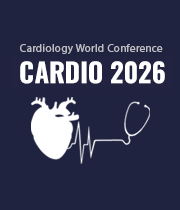Title : The importance of gender and race in chest pain: A case presentation
Abstract:
A clinical picture of typical angina with elevated troponin and ischemic changes on electrocardiogram (ECG) has been traditionally used as a trifecta in diagnosing acute myocardial infarction (AMI). With a normal ECG however, proper diagnosis can be challenging and lead to delays in management. We present a case of a female presenting with persistent chest pain and elevated troponin despite a normal ECG, who was later found to have spontaneous coronary artery dissection (SCAD) due to undiagnosed fibromuscular dysplasia (FMD).
Case:
A 56-year-old African American woman with history of hypertension, heart failure with preserved ejection fraction, and chronic bronchitis presented to the emergency department with persistent left sided chest pain that was initially exertional but progressed to rest pain. Review of system was positive for chest tightness and shortness of breath.
On evaluation, the patient appeared anxious. Labs showed elevations in troponin (peak of 5.68ng/mL) and lactic acid (3.2mmol/L). ECG showed sinus rhythm without any ST segment changes. CT pulmonary embolism (PE) protocol was negative for pulmonary embolism. Transthoracic echocardiogram showed normal ejection fraction and no hypokinesis. She was initiated on heparin and nitroglycerin drip after risk stratification for presumed NSTEMI. However, the patient had persistent chest pain with no relief despite aggressive anti-anginal management. She was taken emergently for a left heart catherization (LHC) which revealed am angiographically normal right coronary artery and a long proximal to distal segment obtuse marginal-1 dissection. Given the lack of atherosclerosis, the lesion was not stented and medical management was pursued. Given this isolated finding, work up for FMD was initiated, where a CT abdomen / pelvis revealed a beaded appearance of the right main and segmental renal artery (FMD). Aggressive blood pressure control was initiated and the patient was discharged home in stable condition.
Discussion:
The overall prevalence of SCAD remains uncertain. However, after excluding atherosclerosis, trauma, and iatrogenic causes, some studies suggest that SCAD is responsible for 1-4% of all ACS. Management can be difficult as SCAD patients can present with normal ECG findings. However, prompt evaluation is necessary to avoid any delays in care.
Conclusion:
The possibility of SCAD clearly echoes the importance of considering female-predominant cardiovascular diseases, especially in young and middle-aged African-American women presenting with chest pain.



